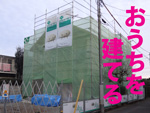VERITAS Storage Foundation Basic: 設定編 [VERITAS]
さて、インストールが終わったので、設定です。
まあ、
http://straycats.blog.so-net.ne.jp/2007-01-15-2
に書いた内容をまとめなおしただけのような(^^;
インストールが終わると、/opt以下にインストールされるので、そこに移動します。
まずは、vxdiskで確認です。
今回使うコマンドは、すべて/opt/VRTS/binの下にあります。
ってことで、以下、いちいち調べるのは省略。
お次は、vxdiskadmで管理したいディバイスを管理対象にします。
すると...
Create a new group named centos? [y,n,q,?] (default: y)
Create the disk group as a CDS disk group? [y,n,q,?] (default: y)
Use a default disk name for the disk? [y,n,q,?] (default: y)
Add disk as a spare disk for centos? [y,n,q,?] (default: n)
Exclude disk from hot-relocation use? [y,n,q,?] (default: n)
Add site tag to disk? [y,n,q,?] (default: n)
A new disk group will be created named centos and the selected disks
will be added to the disk group with default disk names.
sdb
Continue with operation? [y,n,q,?] (default: y)
Initializing device sdb.
Enter desired private region length
[<privlen>,q,?] (default: 65536)
VxVM NOTICE V-5-2-120
Creating a new disk group named centos containing the disk
device sdb with the name centos01.
Add or initialize other disks? [y,n,q,?] (default: n)
これで元のメニュー画面に戻るので「list」で確認してみます。
お次は、vxassistでディスクグループから領域をを割り当てます。
なお、グループを指定していない場合は、デフォルトグループから割り当てられます。
以下の例では、4GBを「vol0」という名前で割り当てています。
実際に毎回起動時にmountするには、/etc/fstabに書き込みますが、最終行に以下のように追加します。
なおmount pointは「/VxFsVol0」としました。
rdskを指定すると、block deviceぢゃない!と怒られます(怒られました(^^;)
で、あとは
さて、これからが、今回の本題ですが、また今度。
まあ、
http://straycats.blog.so-net.ne.jp/2007-01-15-2
に書いた内容をまとめなおしただけのような(^^;
インストールが終わると、/opt以下にインストールされるので、そこに移動します。
# cd /opt # ls VRTS VRTSccg VRTSfspro VRTSmh VRTSperl VRTSvmpro VRTSaa VRTSdcli VRTSfssdk VRTSob VRTSspt VRTSvxfi VRTSalloc VRTSddlpr VRTSicsco VRTSobc VRTSvdid VRTSvxms VRTSat VRTSdsa VRTSmapro VRTSpbx VRTSvlic
まずは、vxdiskで確認です。
# find . -name vxdisk ./VRTS/bin/vxdisk # ./VRTS/bin/vxdisk path SUBPATH DANAME DMNAME GROUP STATE sda sda - - ENABLED sdb sdb - - ENABLED
今回使うコマンドは、すべて/opt/VRTS/binの下にあります。
ってことで、以下、いちいち調べるのは省略。
お次は、vxdiskadmで管理したいディバイスを管理対象にします。
# ./VRTS/bin/vxdiskadm Volume Manager Support Operations Menu:: VolumeManager/Disk 1 Add or initialize one or more disks 2 Encapsulate one or more disks 3 Remove a disk 4 Remove a disk for replacement 5 Replace a failed or removed disk 6 Mirror volumes on a disk 7 Move volumes from a disk 8 Enable access to (import) a disk group 9 Remove access to (deport) a disk group 10 Enable (online) a disk device 11 Disable (offline) a disk device 12 Mark a disk as a spare for a disk group 13 Turn off the spare flag on a disk 14 Unrelocate subdisks back to a disk 15 Exclude a disk from hot-relocation use 16 Make a disk available for hot-relocation use 17 Prevent multipathing/Suppress devices from VxVM's view 18 Allow multipathing/Unsuppress devices from VxVM's view 19 List currently suppressed/non-multipathed devices 20 Change the disk naming scheme 21 Change/Display the default disk layouts 22 Mark a disk as allocator-reserved for a disk group 23 Turn off the allocator-reserved flag on a disk list List disk information ? Display help about menu ?? Display help about the menuing system q Exit from menus Select an operation to perform: 1ここでは「1」の「Add or initialize one or more disks」を選びます。
すると...
Add or initialize disks Menu:: VolumeManager/Disk/AddDisks Use this operation to add one or more disks to a disk group. You can add the selected disks to an existing disk group or to a new disk group that will be created as a part of the operation. The selected disks may also be added to a disk group as spares. Or they may be added as nohotuses to be excluded from hot-relocation use. The selected disks may also be initialized without adding them to a disk group leaving the disks available for use as replacement disks. More than one disk may be entered at the prompt. Here are some disk selection examples: sda: add only disk sda sdb hdc: add both disk sdb and hdc xyz_0 : a single disk (in the enclosure based naming scheme) xyz_ : all disks on the enclosure whose name is xyz Select disk devices to add: [<pattern-list>,list,q,?] sdbなんて出てくるので、今回LVMの管理下にないsdbを指定します。
Here is the disk selected. Output format: [Device_Name] sdb Continue operation? [y,n,q,?] (default: y)間違えてない限り「Enter」を押して、先に進みます。
You can choose to add this disk to an existing disk group, a new disk group, or leave the disk available for use by future add or replacement operations. To create a new disk group, select a disk group name that does not yet exist. To leave the disk available for future use, specify a disk group name of "none". Which disk group [<group>,none,list,q,?] (default: centos)ここから先は、はいはいはいはい…と進めましょう。
Create a new group named centos? [y,n,q,?] (default: y)
Create the disk group as a CDS disk group? [y,n,q,?] (default: y)
Use a default disk name for the disk? [y,n,q,?] (default: y)
Add disk as a spare disk for centos? [y,n,q,?] (default: n)
Exclude disk from hot-relocation use? [y,n,q,?] (default: n)
Add site tag to disk? [y,n,q,?] (default: n)
A new disk group will be created named centos and the selected disks
will be added to the disk group with default disk names.
sdb
Continue with operation? [y,n,q,?] (default: y)
Initializing device sdb.
Enter desired private region length
[<privlen>,q,?] (default: 65536)
VxVM NOTICE V-5-2-120
Creating a new disk group named centos containing the disk
device sdb with the name centos01.
Add or initialize other disks? [y,n,q,?] (default: n)
これで元のメニュー画面に戻るので「list」で確認してみます。
Select an operation to perform: list List disk information Menu:: VolumeManager/Disk/ListDisk Use this menu operation to display a list of disks. You can also choose to list detailed information about the disk at a specific disk device address. Enter disk device or "all" [<address>,all,q,?] (default: all) DEVICE DISK GROUP STATUS sda - - online invalid sdb centos01 centos online Device to list in detail [<address>,none,q,?] (default: none)またメニューに戻りますが、今度は「q」で終了します。
お次は、vxassistでディスクグループから領域をを割り当てます。
なお、グループを指定していない場合は、デフォルトグループから割り当てられます。
以下の例では、4GBを「vol0」という名前で割り当てています。
# ./VRTS/bin/vxassist make vol0 4g
# ls -l /dev/vx/rdsk/DGcentos/vol0
crw------- 1 root root 199, 65534 2月 1 22:36 /dev/vx/rdsk/centos/vol0
# mkfs -t vxfs /dev/vx/rdsk/centos/vol0
version 7 layout
8388608 sectors, 4194304 blocks of size 1024, log size 16384 blocks
largefiles supported
実際に毎回起動時にmountするには、/etc/fstabに書き込みますが、最終行に以下のように追加します。
なおmount pointは「/VxFsVol0」としました。
/dev/vx/dsk/centos/vol0 /VxFsVol0 vxfs defaults 1 2ちなみにmountするのはrdskじゃなくてdskの方。
rdskを指定すると、block deviceぢゃない!と怒られます(怒られました(^^;)
で、あとは
# mount /VxFsVol0 # cd /VxFsVol0/ # ls lost+foundなんて具合にmountするだけです。
さて、これからが、今回の本題ですが、また今度。
2009-02-03 22:13
nice!(0)
コメント(0)
トラックバック(0)






コメント 0